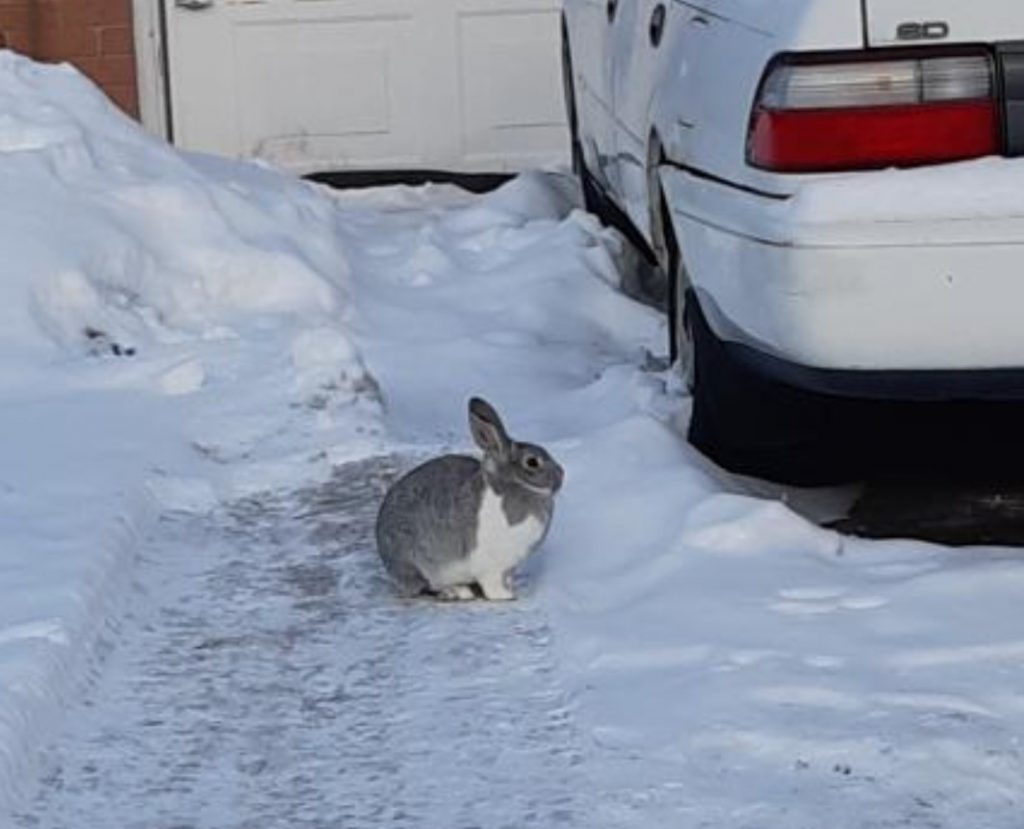Catching a Dumped or Stray Domestic Rabbit
Domestic rabbits are not the same as wild rabbits. They do not survive outside.
If you are in Southern Ontario and have seen a domestic rabbit loose outside, contact us at: haviva@rabbitrescue.ca and include information about where and when the rabbit was last seen, a description of the rabbit, and a photo if possible.
We have teams of volunteers in over 85 cities to help catch dumped rabbits. If you’d like to join one of our teams, please email and indicate which cities you would like to help with.
If you are out of our area, here are some general tips to help you catch a loose domestic rabbit. (Please see our Domestic vs. Wild page if you are unsure if a rabbit is wild or domestic. You can also email us a photo for confirmation).
If you have seen a domestic rabbit in your neighborhood, leaving food/water in one location will help, as it will know where that is, will keep coming for it, making locating and catching easier.
RHDV
On June 10, 2022, the Canadian Food Inspection Agency reported two cases of rabbit hemorrhagic disease virus-2 (RHDV2) in a household of domestic companion rabbits in Lambton County. As a result, there is a risk with participating in bunny catching and roundups. We recommend taking precautions if you are going to participate in bunny catching or roundups to keep your own rabbits safe. You can find easy to understand and implement information on our web page: www.rabbitrescue.ca/RHDV
Preparation
The more people you have, the better. It is best to have at least 4, preferably 6 to 8 people.
If you have fishing nets, those will be helpful. If not, you can use garden/strawberry netting. Wearing gloves, like gardening gloves can help protect from scratches, etc. Bring carriers lined with blankets to put the rabbit(s) in once caught and food to help lure the bun or to give after they are caught.
Fencing helps surround a rabbit. NIC cubes tied together or an exercise pen that can be opened up and used to corral the rabbit are often extremely useful.
Important To Remember
If the rabbit is on someone else’s property, ask permission to go on their lawn. Most neighbors are cooperative, but not all. Do not trespass.
When catching a rabbit, you may not always catch them on the first try, so don’t be discouraged.
Things to look for: is there a place the bun likes to hide? Where does the rabbit run to feel safe? Is there a path (between bushes), a hole (in a bush, under a fence) that the rabbit uses to escape? You want to anticipate where the rabbit will go.
Tip: the rabbit will always outrun you. They are built for speed, but they aren’t built for endurance, which means they can run fast but not for long. Try to let the rabbit do all the running, you just follow with the nets. Eventually they will get tired. Watch out for roads where the bunny could run onto. You do not want to scare them into traffic.
Possible Scenarios
- Bunny runs under a car. Let the rabbit stay there! Take your garden netting (buy 2 or 3 of these) and wrap the bottom of the car with it. This is where extra people will help. Have your helpers keep the netting in place by stepping on it and keeping it flush to the ground while using their hands to hold it up, otherwise the rabbit may bolt and slip right under and get away. Once the perimeter of the car is secure, someone can shimmy underneath with a fishing net and try to catch the rabbit that way. If the rabbit bolts, hopefully they get tangled in the netting. Make sure your helpers are prepared for this.
- Bunny runs under a low tree or bush. Let the rabbit stay there. Use the same idea as with the car and wrap the bottom of the tree/bush with the netting, having your helpers step on it to keep it flush with the ground and holding the top up. Once secured, someone can crawl in (if the rabbit doesn’t try to bolt first). Once in, use a fishing net or the rabbit will get tangled in the netting.
- Bunny runs under a deck. Depending on the size/height of the deck, the same instructions apply as above. Wrap the perimeter with netting, secure and crawl in, using fishing net to catch.
- Rabbit runs through hole in bush/fence to another yard. Once you see the path the rabbit has taken, stretch the netting over the opening of the hole and have your helpers secure it by once again stepping on it and keeping it flush to the ground as they also hold it up. Once secure, send some helpers to the other side and have them “walk” the rabbit back towards the hole. Hopefully the rabbit will run right back through the hole they came in by and get tangled in the net waiting on the other side. If you miss the rabbit, set up and try again and again until caught.
- Rabbit is in the corner of a yard in the open. Try to “walk” the rabbit into a position where they can be surrounded, like the corner of a fenced yard. Once you do, you will use the netting as a wall. Have your helpers very slowly move towards the rabbit, keeping the netting as close to the ground as possible, anticipating the bunny to bolt. Always make sure your helpers are ready, because the rabbit will hit that net and bolt out fast. But don’t get discouraged! That’s usually what happens and eventually you will get them.
- Rabbit is near an open garage. If you can get the rabbit into the garage, stretch the netting across the opening and secure it there until you can close the garage door. Then go in the garage from the back door or house door. Smaller space = easier to catch!
You’ve Caught the Rabbit! Now What?
When the rabbit is caught in a net or in the netting, they are going to struggle and may be panicked. As fast as possible, place your hands on their back/shoulders and press them down on the ground and hold them there. The rabbit will stop struggling at this point, but make sure you keep a very firm grip, because they will try to get away if you loosen it. Wrap a towel/blanket around the rabbit if you feel you need it to keep them secure. Rabbits can easily break their backs or bones with kicking and struggling, so holding them firm is important and is actually safer for the rabbit. Now you need to get the rabbit into a carrier. Unwrap them from the netting (you can carefully cut or rip the garden netting if that is easier) but still hold the rabbit tight. If you have a carrier, open the front, sit it on it’s back so the opening is at the top, and lower the bunny inside. Once the rabbit is in, close the top and turn the carrier right-side-up again. Loading the rabbit in this way makes it harder for them to jump out while you are putting them in. If you don’t have a carrier, use a big box. If you are really nervous about this part, take the bunny, while still in the netting, into a car and try transferring them there. At least if the rabbit gets out of your grip, they will still be contained in the car.
After Catching the Rabbit
Contact your local rescues to see if they have immediate space for the rabbit. If not, it is important to take the rabbit to a shelter immediately. This way, the rabbit can receive any medical care it needs.
If it is late at night and all rescues and shelters are closed, provide the rabbit with a litter box with rabbit safe litter, hay, food, fresh water, and a box or a small hidey house. Do not feed the rabbit treats/fruit/sugary foods. Keep the rabbit away from children and pets in case it has fleas or other illnesses. If you decide to keep the rabbit, make sure you get them to the vet ASAP for a health check. Bring in a stool sample to check for parasites. Once given a clean bill of health, make sure to get the bunny vaccinated against RHDV, and spayed/neutered. Check out our other pages for care information.







